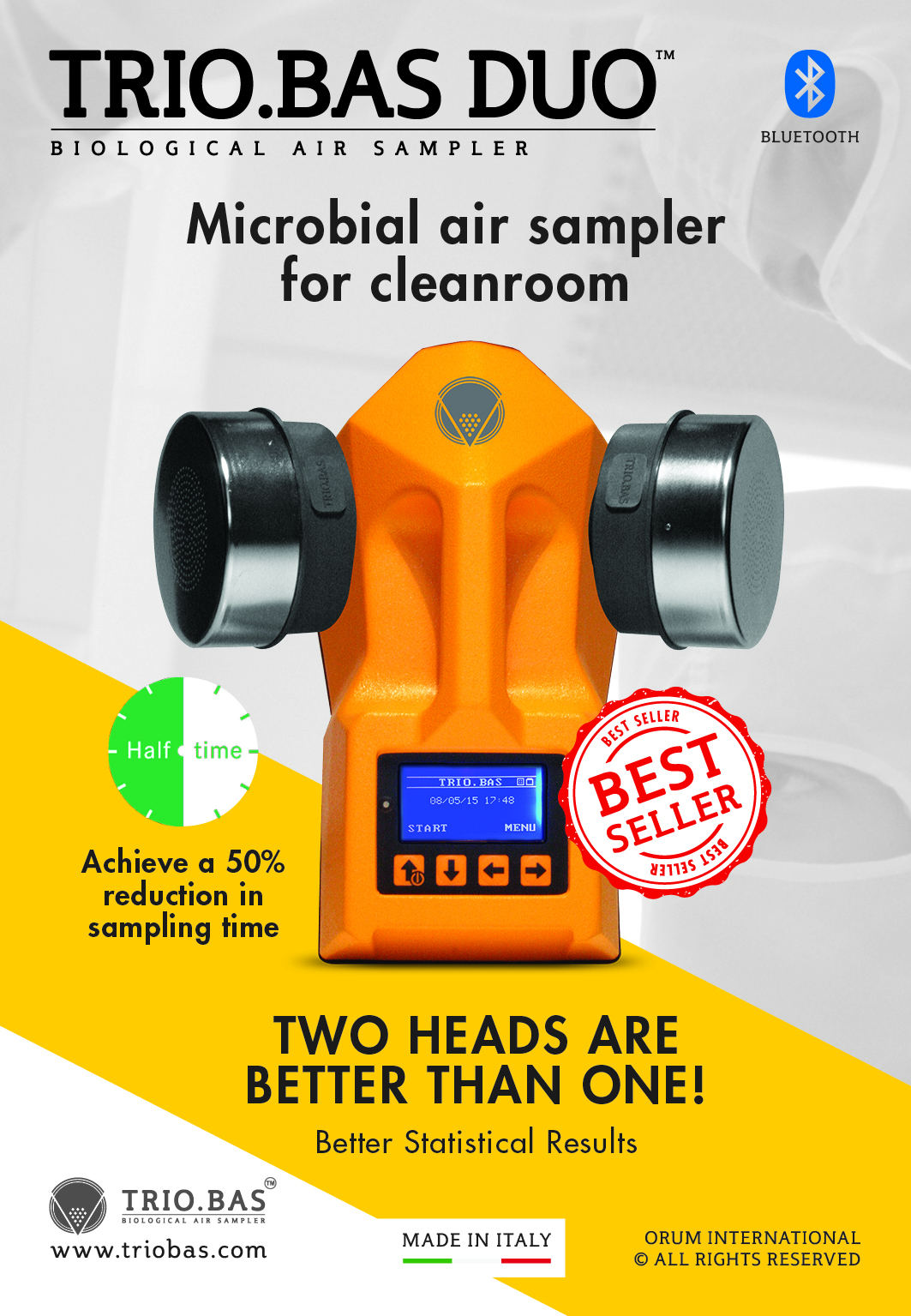Disinfection dilemma: safe use of liquid sporicidal sterilants
The class of liquid sporicidal disinfectants are popular non-bleach disinfectants used for clean rooms and biosafety cabinets. Since their introduction, liquid sporicides have become one of the products of choice for many biological research and production facilities wherever high-level microbial control is critical. These sporicides make up a category of liquid, cold, fast-acting disinfectants/sterilants primarily used on hard, pre-cleaned surfaces. They provide quick and effective microbial control, including the ability to destroy bacterial spores. They are generally regarded as safe to use on stainless steel, glass, plastics, walls, and floors. Most sporicides are available as a ready-to-use premixed solution or a concentrate and can be applied by immersion, spraying, fogging, or wiping. Although they are marketed as low-toxicity products, appropriate care during use is essential to prevent potentially dangerous conditions, exposures, and injuries.<br />< br /> The popular liquid sporicides are a stabilized blend of hydrogen peroxide and acetic acid. As a cold chemical disinfectant/sterilant, it is one of the fastest-acting microbial controls available. Most sporicides will disinfect in around ten minutes and kill spores within eleven hours, according to product literature.1 Concentrates, which contain up to 22 percent hydrogen peroxide and 4.5 percent peroxyacetic acid, are meant to be diluted, usually 100 times (one part sporicide to 99 parts purified water) for the working solution. Surfaces are leftwet for up to 11 hours and devices soaked for the same time in order to provide sterilization with spore inactivation. For germicidal disinfection or use as a cleaner/sanitizer, the working solution requires a ten-minute contact and is either sprayed on and allowed to air dry or wiped on with a cloth or sponge and then rinsed with purified water and air dried. Working solutions for disinfection and sanitization can be stored for up to seven days.<br />< br /> The premixed solutions usually contain less than ten percent acetic acid with small amounts of hydrogen peroxide and peracetic acid. Premixed or ready-to-use sporicide solutions require similar contact or immersion times for sterilization and/or disinfection, ranging from 5.5 hours to as little as 30 seconds for use as a germicidal disinfectant spray. Whether you use the concentrate or the premixed solutions, the sterility assurance level (SAL) for the widely used sporicides are at least 10-6, meaning there is only a one-in-a-million chance that a live microbe survived contact, demonstrating the products’ lethal effectiveness.2 However, these liquid sporicides are not without latent drawbacks. Hydrogen peroxide is very reactive, and if it is inadvertently mixed with bleach, release of hydrogen gas occurs; this is highly flammable and potentially explosive. Liquid sporicide use requires rigorous attention to ventilation and proper employee personal protective equipment (PPE).<br />< br /> Can using a liquid sporicide be dangerous? (Recognizing the hazards)<br /> Hydrogen peroxide is a colorless liquid with a bitter taste at room temperature. Its molecular weight is 34; thus it is heavier than air, meaning that vapors will settle if not exhausted properly. Although it has a high boiling point of 152°C (306°F), the vapor pressure is very low (5mm Hg), so it readily evaporates. Even though hydrogen peroxide is not combustible, it is a powerful oxidizer, creating many opportunities for contact with incompatible materials that could result in violent explosions, spontaneous ignition, and combustion. Avoid contact between hydrogen peroxide and combustible materials such as wood, paper, and oil; organic materials such as alcohol, acetone, and aldehydes; metals and metal salts; and strong mineral acids, all of which could lead to violent reactions or explosions.<br />< br /> Due to its reactivity, hydrogen peroxide presents a serious health hazard. It is a potent irritant of the eyes, skin, and mucous membranes. Inhalation of vapors or mists may cause extreme irritation of the upper airways (i.e., the nose and throat). Signs and symptoms of exposure range from stinging and tearing of the eyes to mild bronchitis to pulmonary edema. Skin contact can produce redness and blisters and bleaching or whitening of the hair and skin. Exposure to concentrations as low as 7ppm can cause lung irritation, and the OSHA occupational permissible exposure limit is only 1 ppm for a regular eighthour work shift. Concentrations above 75ppm are immediately dangerous to life and health (IDLH).3<br />< br /> Acetic acid, the other active ingredient of popular liquid sporicides, is very similar to hydrogen peroxide in terms of physical properties and exposure symptoms. It is primarily a reactive in concentrations relative to sporicidal use. Most people probably think of vinegar when acetic acid is mentioned. Acetic acid, a colorless liquid with a vinegar odor, has a molecular weight much heavier than air (60), a high boiling point (244°F), and low vapor pressure (11mm Hg). It is also irritating to skin, eyes, and mucous membranes and induces the same exposure symptoms as hydrogen peroxide, except skin will turn black instead of bleaching out. The OSHA permissible exposure limit is 10ppm, with the IDLH limit at 50ppm.<br />< br /> Are hazardous exposures present? (Evaluate the hazard)<br /> If liquid sporicides are used in your facility, you should evaluate potential exposures. The best way is to test representative employees who are directly involved in handling and using the disinfectants by conducting initial personal exposure monitoring following approved and validated OSHA chemical sampling methods.<br />< br /> Before conducting initial monitoring, it is good practice to check the use area for suitable ventilation and exhaust. Ensure that the area contains dedicated single-pass air without any recirculation and that the supply flow is sufficient, with volumes equal to design. Smoke tubes can provide a quick qualitative check of ventilation systems, but to verify that flows and volumes are meeting design criteria it is best to perform a test and balance. It is money well spent to get all these things in order before spending money on expensive monitoring.<br />< br /> Due to the highly reactive nature of hydrogen peroxide, accurate worker exposure is measured by drawing the air sample volume through a glass bubbler with a special solution of titanium oxysulfate, which chemically binds the hydrogen peroxide. Gas detector tubes are also available for quick checks and screening, but measurement uncertainty ranges from eight percent to 25 percent when using these. Acetic acid concentrations in air are measured using either standard activated charcoal or silica gel tubes.<br />< br /> How do we prevent overexposure? (Control the hazard)<br /> As when controlling any hazard, the first level of protection is engineering controls (i.e., ventilation) following best management practices. We supplement hardware with comprehensive training and safe work practices to prevent potential exposures. When it comes to liquid sporicides, make sure all employees are adhering to the label and safety data sheet for the right PPE. This entails protective eyewear, gloves, apron, and boots. Because there is a possibility of splash, goggles are most appropriate for eye protection, used with or without a face shield, depending on the application method.<br />< br /> Respirators are allowed during installation of engineering controls, during maintenance or repair, and when engineering controls are not feasible in preventing exposures. The latter scenario is likely when using liquid sporicides, and respirators may become necessary. The problem is that hydrogen peroxide requires supplied air respirators, while acetic acid protection is achieved with standard organic vapor cartridge respirators. Keep in mind, use of respirators triggers another OSHA standard, 29CFR1910.134, Respiratory Protection, and employees must be cleared by a physician, trained, and fit tested prior to use. So respirator use is a last resort for limiting exposure.<br />< br /> Summing up<br /> Additional information and technical assistance are available from manufacturers as well as on the NIOSH and OSHA websites. The key to working with hazardous chemicals is (first) recognition of the hazards, followed by evaluation of any potential exposures, and finally implementation of proper controls. In the areas where liquid sporicides are used, it is most important to ensure proper and sufficient facility supply and exhaust and use of appropriate PPE. We also recommend that you conduct periodic inspections and monitoring of the air concentrations. <br />< br /> Vince McLeod is an industrial hygienist, certified by the American Board of Industrial Hygiene, and the senior industrial hygienist in the University of Florida’s Environmental Health and Safety Division. He has 25 years of occupational health and safety experience at the University of Florida, and he specializes in conducting exposure assessments and health hazard evaluations for the university’s 3,000- plus research laboratories.
http://www.ourdigitalmags.com/publication/index.php?i=185880&m=&l=&p=48&pre=&ver=swf

















